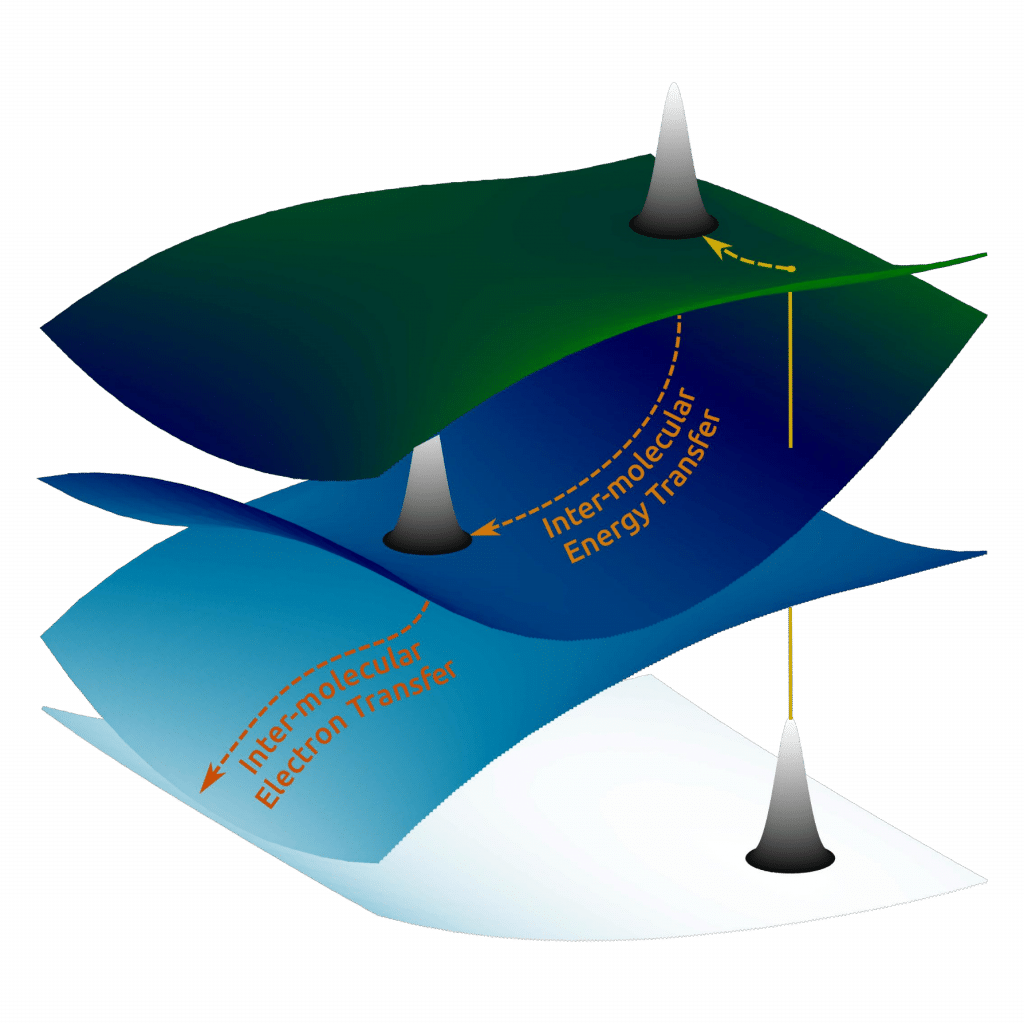The project in a nutshell
This project aims at developing theoretical and numerical methods to simulate space- and time-resolved ultrafast dynamics in novel hybrid molecular-metal nanoparticle systems.
What is it about? The excitation of collective electron dynamics inside the metallic nanoparticles induced by external light fields leads to strongly re-shaped electromagnetic near-fields with a complex spatial and temporal profile. The interaction of these modified and enhanced near-fields with molecules located in close vicinity to the metallic nanoparticle is the origin of many astonishing physical and chemical phenomena, such as the formation of new quasi-particles, new mechanisms for chemical reactions or the ultra-high spatial resolution and selectivity in molecular detection.
What is it good for? Besides being of fundamental interest, this interplay between near-fields and molecules promises great potential on the application side, potentially enabling revolutionary breakthrough in new emerging technologies in a broad range of research fields, such as nanophotonics, energy and environmental research, biophotonics, light-harvesting energy sources, highly sensitive nano-sensors etc. This necessitates a solid theoretical understanding and simulation of these hybrid systems.
How do we succeed? The goal of project QUEM-CHEM is the development of new approaches and methods beyond the state of the art, aiming at a synergy of existing but independently applied methods:

To calculate the quantum nature of the molecule-metallic nanoparticle moiety.

To describe the complex evolution of the light fields and the near fields around nanostructures.

To incorporate the response of the molecule to the near-fields.
The structure of the project
The project itself is split into two parts. The first one focusses on the development of a consistent picture of the metallic-organic hybrid system and the interaction with light thereof. The second applies this methodology to a number of potential applications, including plasmon catalysis and tip-enhanced Raman spectroscopy:
- Part I – Fundamentals and Development
- I.1 – Quantum Chemical Effects
- I.2 – Field-Induced Dynamics
- I.3 – Self-Consistent Description
- Part II – Exemplary Applications
- II.1 – Plexciton States and Dynamics
- II.2 – Plasmon Catalysis
- II.3 – Tip-Enhanced Raman Spectroscopy
- II.4 – Nano-Scale Rings and Sensing
- II.5 – Chiral Hybrid Systems
